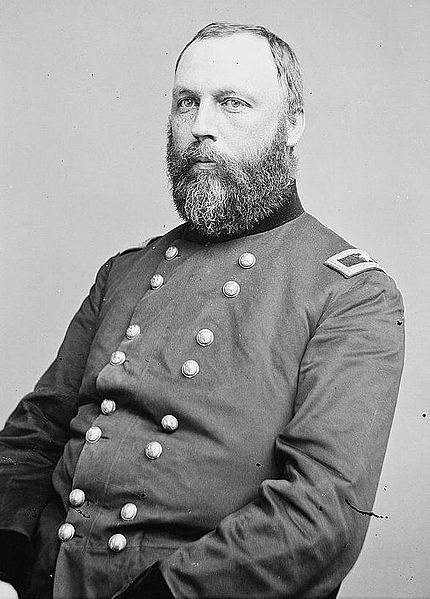<Back to Index>
- Psychologist Bruno Bettelheim, 1903
- Painter Rudolf Ritter von Alt, 1812
- Surgeon General of the U.S. Army William Alexander Hammond, 1828
PAGE SPONSOR

William Alexander Hammond, M.D. (August 28, 1828 – January 5, 1900) was an American neurologist and the 11th Surgeon General of the U.S. Army (1862 – 1864). In addition to his pioneering work in neurology and his military service, especially during the Civil War, he founded the Army Medical Museum (now called the National Museum of Health and Medicine), co-founded the American Neurological Association, and gave his name to Hammond's disease, a type of athetosis which he was the first to describe in 1871. He was also an amateur naturalist, and a species of spadefoot toad (Spea hammondii) was named in his honor by Spencer Fullerton Baird of the Smithsonian Institution.
William Hammond was born in Annapolis, Maryland, but moved to Harrisburg, Pennsylvania at the age of five and spent the remainder of his childhood there. He received an M.D. from the University of the City of New York at the age of twenty, and after an internship and a few months in a private practice, he became an Assistant Surgeon in the U.S. Army in July 1849. His work in the army during his first stint (1849 – 1860) was primarily in the west; here Hammond notably served as the medical director of Fort Riley. In 1857, he won an American Medical Association Prize for his essay Experimental Research Relative to the Nutritive Value and Physiological Effects of Albumen Starch and Gum, when Singly and Exclusively Used as a Food, which Hammond had researched and compiled over the course of several years with the army.
On October 31, 1860, Hammond left the Army and accepted chairship of anatomy and physiology at the University of Maryland, Baltimore medical school. Here he taught and worked until the beginning of the Civil War. After
working as a surgeon in the Baltimore Infirmary, Hammond rejoined the
Army on May 28, 1861, a month and a half after the beginning of the
war. Though he began in a position lower than that which he had
previously held, he was soon promoted to be the inspector of camps and
hospitals for General William Rosecrans, who was then stationed in West Virginia. The Sanitary Commission, which was dissatisfied with the current medical administration, as well as several other advocates including Major General George B. McClellan, eventually successfully lobbied to have William Hammond appointed as Surgeon General. After the incumbent Clement Finley was dismissed, President Abraham Lincoln appointed Hammond as Surgeon General of the United States Army with the rank of Brigadier General on April 25, 1862, less than one year after having rejoined the Army. Hammond immediately began instigating reforms. For instance, entrance to the Medical Corps was reorganized and expectations for new recruits were increased. He founded the National Museum of Health and Medicine and Satterlee Hospital in
1862, and suggested many increases of the presence of medicine in
Washington, including the establishment of a permanent hospital corps,
a permanent general hospital, and a medical laboratory for the
military. These recommendations were all manifested eventually, but at
the time many of them led to dissent within the Army medical community.
In the late summer of 1863, Hammond was ordered to leave Washington and
instead oversee operations in New Orleans, Louisiana, while Joseph K. Barnes assumed
the position of Surgeon General in Hammond's place. Hammond demanded
either to be reinstated in his office in place of Barnes, or to be sent
to trial by court - martial.
The latter eventually took place, and in a questionable verdict,
Hammond was found guilty of "irregularities" concerning the purchase of
medical supplies and was relieved of duty on August 18, 1864.
After leaving the Army, Hammond moved to
New York City, where he began to focus more on neurology. He became professor of nervous and mental diseases at the Bellevue Medical College in 1867, and took on a professorship on the same subjects at the University of the City of New York in 1874, as well as occasionally teaching at the University of Vermont and
the Post Graduate Medical School of New York. In December 1874, Hammond
founded the American Neurological Association (ANA) along with six
others. Besides the ANA's journal Annals of Neurology, Hammond was also responsible for the creation or editorship of several other medical journals. In
1878, Congress exonerated Hammond, and he was restored to the list of
retired army personnel on August 27, 1879, though he remained without
allowances or pay. In 1888, he moved back to Washington, D.C., where he
founded a sanatorium. He spent the remainder of his life there and died on January 5, 1900 at his home due to heart problems. He is buried at Arlington National Cemetery, where he lies in section 1, grave 465.